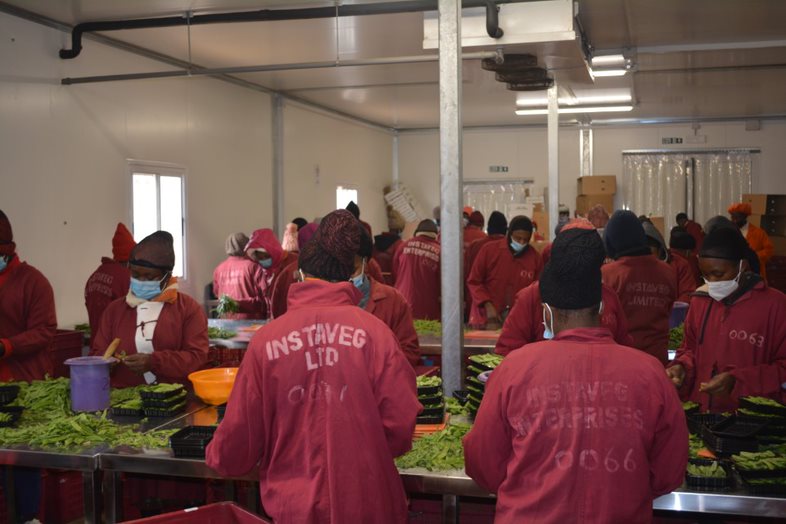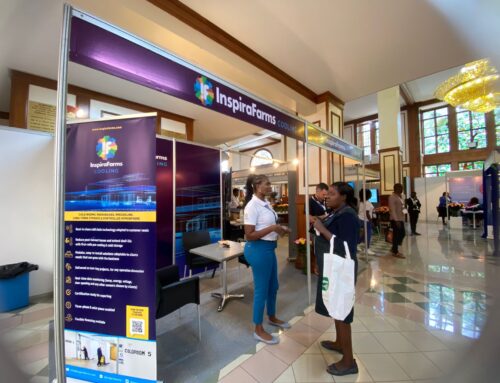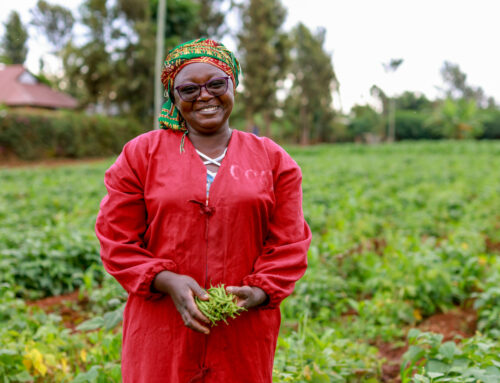Kenya’s Instaveg benefits from modular cold storage, pre-cooling and processing facility
The fresh produce export industry in Kenya is a million-dollar industry, with vegetables, fruit, and nuts accounting for over $266.3 million worth of export revenue in 2020. In the same year, Kenya exported 314 thousand metric tons of fresh horticultural products. The sector is largely led by off-takers and exporters registered under the Horticultural Crops Directorate, who mostly contract small-scale farmers across the country. While most of the challenges faced by aggregators are related to the shortcomings and inefficiencies in the small-scale structure of the Kenyan agricultural sector, other significant constraints include the low adoption of cold storage.
With over 200 registered exporters in the subsector, smallholder farmers who would otherwise be dependent on local markets, are able to access high-value export markets. However, fresh produce is considered a substantially risky and volatile industry, attributed to the perishability of fresh fruits and vegetables. The low adoption rate of cold chain solutions has not made things any easier, with only about 5% of fresh produce passing through cooling infrastructure. While approximately 96% of fresh produce in Kenya caters to the local consumer market, an average of 4% caters to the fresh export markets across European nations.
One of these fresh produce exporters in Kenya is Instaveg, tucked in rural Kirinyaga County; and made up of aggregators, processors, and marketers. Their current portfolio of export consists of garden peas, lemongrass, peas, French beans, and baby corn. Within its network, Instaveg has 200 farms and 300 smallholder farmers who sell their produce from their farms ranging from 0.5 to 6 hectares.
The inspiraFarms’ cooling solution
Instaveg’s activities mainly cut across the procurement, distribution, produce logistics, sorting, packaging, and marketing of the fresh produce for predominantly the export market. Within its farmer network, Instaveg faced several challenges, including, post-harvest losses due to inefficient cold chain facilities, failing to meet certification standards to access export markets.
Initially, InstaVeg used to utilize a rented-sponsored cooling facility, before adopting InspiraFarm’s modular cold storage. While the rented-sponsored system provided an alternative cooling solution, it failed to meet the efficiency needed to retain quality standards and ensure the shelf life required before and after export. At the same time, the high running and maintenance costs for these old cooling facilities that were over 30 years old, cut down their margins drastically.
In 2021, InspiraFarms delivered to Instaveg a 440sqm project, divided into three independent facilities:
A 240sqm outdoor modular packhouse facility, composed of 30sqm of raw material pre-cooling room, 30sqm of cold storage, 90sqm of processing area, 60sqm of offices, hygiene and crates storage, 15sqm of reception area, and 15 sqm of storage space. The facility is suitable for medium care food processing and has a capacity of cooling and processing more than 6 TON of fresh produce per day.
Additionally, Instaveg received two auxiliary facilities, with a total dimension of 200sqm, to provide areas for crate storage, additional office space, nursing, bathrooms, security, and staff canteen.
This newest facility has helped Instaveg to become the biggest employer in their local region, currently hiring predominantly rural women of their surrounding community. Moreover, Instaveg provides agronomy training and frequent quality control to farmers in its network. Their team picks fresh produce bi-weekly, with produce temporarily left in the grading shed awaiting collection by Instaveg’s 5.5MT refrigerated trucks on the same day of harvest. Upon arrival on-site, the trucks are immediately offloaded, and produce is kept in InspiraFarms’ cold rooms for precooling. Fresh produce is then sorted and packaged at 17 degrees with minimum retention time, then further cooled at the cooled room, ready for next day transit to the airport in refrigerated trucks.
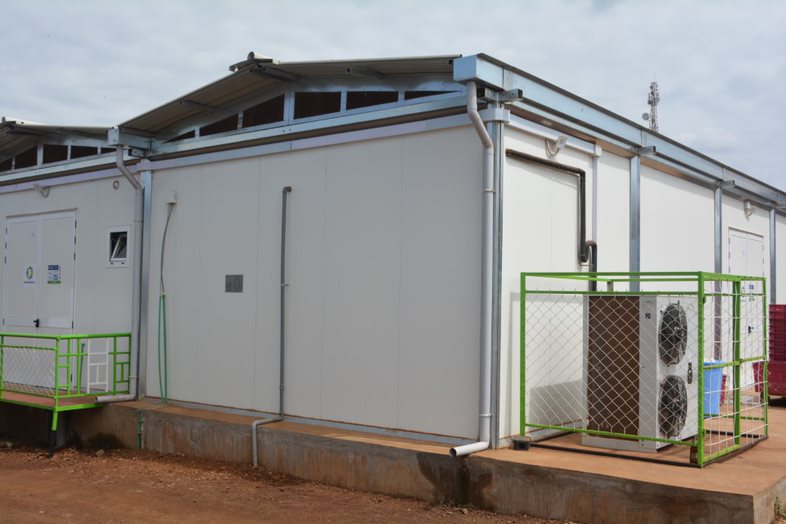
Modular cold storage, pre-cooling and processing facility in Kenya
How Instaveg benefits from its modular cold storage facilities
According to Instaveg’s director, Ashibon Mwangi, one of the most valuable features of their cooling structure is the quickness with which the packhouse environment cools down the internal temperature of its fresh produce, compared to the government-provided structure. As a result, the quality of produce from harvest to packaging and transit is steadily maintained. With the integration of efficient post-harvest cooling solutions, Instaveg has successfully maintained a consistent international food quality standard and amped its traceability. According to Ashibon, they have also cut down power costs by 30%, despite cooling on an area cumulatively twice as large as on the initial government facility.
Ashibon also highlighted the competitive financing offer and the flexibility of payment that motivated them to choose InspiraFarms.
“Our products are able to hold on shelf; there has been over 50% reduction in customer complaints and the same reduction in claims since we attained a complying packing facility. We are also using less power bills by 30% despite cooling a bigger area,” – Ashibon afirmed.
At the core of the fresh produce industry lies the need for quality assurance and customer satisfaction. With the InspiraFarms cold storage all designed by considering the type of fruit and vegetables, Ashibon shares that, they have since become BRC Certified with excellent food safety standards. The nature of their cooling system allows the Instaveg team to regulate temperatures and relative humidity, all customizable depending on crop needs, season, and requirements.
“We have received a lot of good feedback and our customers across Germany, United Kingdom, Dubai and France appreciate the fact that we pack from a complying facility which is certifiable by a milestone in regard to food safety.” – he added.
Instaveg plans to expand both local and international export markets using effective cold chain, traceability, and food safety certification as cutting-edge tools. While their predominant high-value markets lie in export, their operations have opened to local ad-hoc markets to further expand sales. In the future, they are looking to explore the global avocado markets.
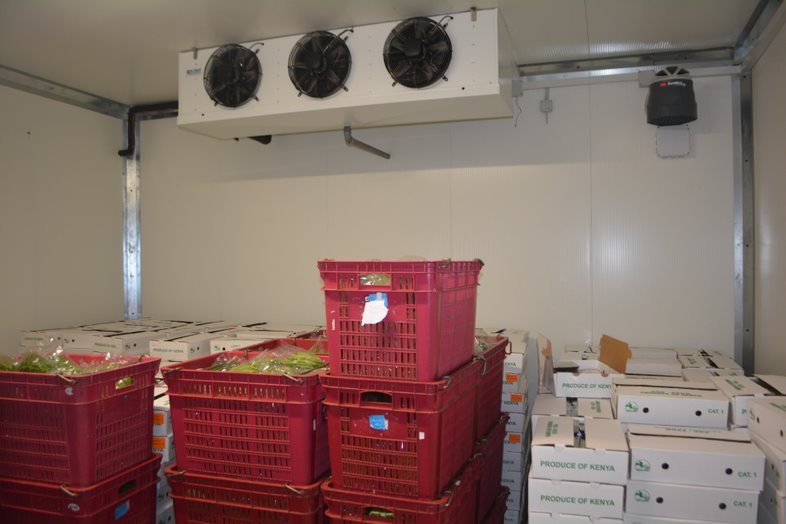
Instaveg products in the cold room ready to be dispatched
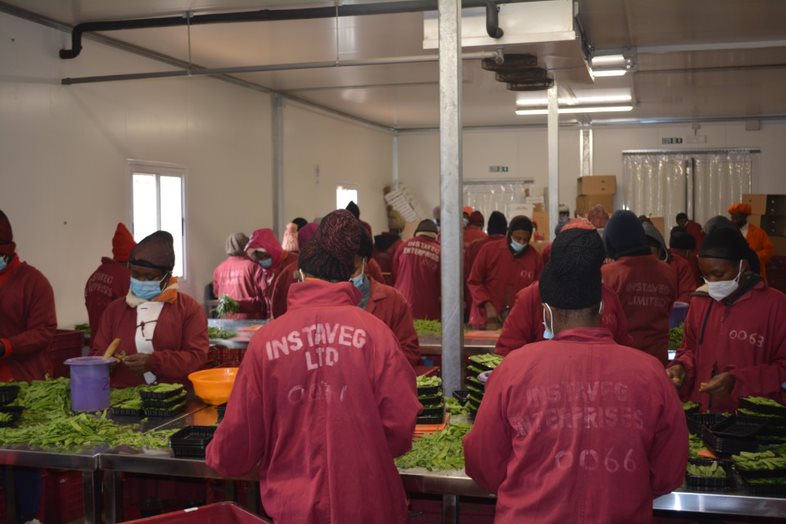
Instaveg packing French beans in the processing facility for export to Europe.

